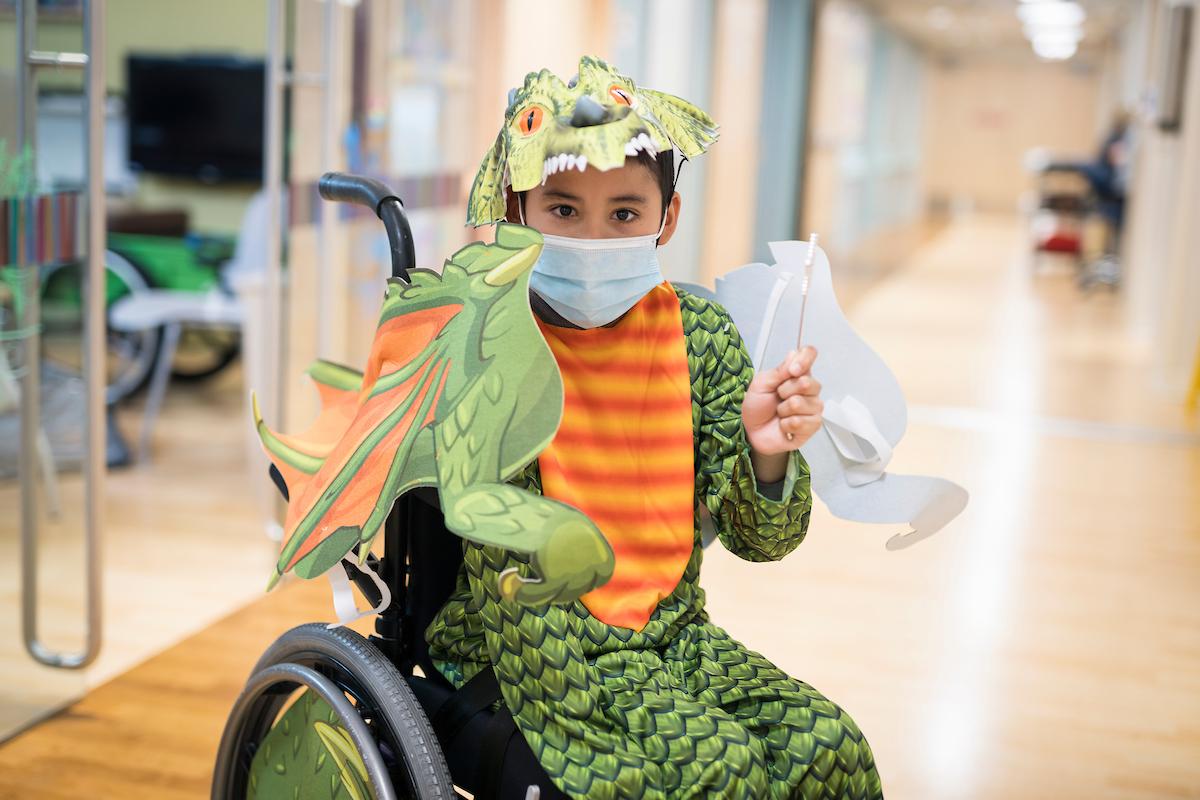Gillette Attracts National, International Visitors for Renowned Gait Analysis Course
From April 25-27, 2018, clinicians hailing from 20 U.S. states and 13 countries converged on Gillette Children’s Specialty Healthcare for the 28th annual Gait Analysis: A Focus on Interpretation. Gillette hosts the course in collaboration with Connecticut Children’s Medical Center in Hartford, Connecticut and University Hospital Pellenberg in Leuven, Belgium.

Gillette medical director and orthopedic surgeon Steven Koop, MD, with a group of clinicians from Chile.
The First of Its Kind
The first and only one of its kind in the world, the gait course began when former Gillette orthopedic surgeon Jim Gage, MD, relocated his practice from Connecticut to Gillette in 1990. At that time clinical gait analysis was in its earliest stages of development, and the course grew from Gage’s desire to maintain connections with his former colleagues.
“The gait course is critical to the ongoing education of health care professionals and to encouraging the establishment of new gait centers,” says Tom Novacheck, MD, director of Gillette’s James R. Gage Center for Gait and Motion Analysis. “It also promotes development in the field of gait analysis, which helps all of us, as providers, make better recommendations and provide better care for our patients.”

The Center for Gait and Motion Analysis at Gillette is named in honor of Jim Gage, MD (center) who played a pivotal role in propelling gait analysis into clinical practice.
Spreading Knowledge and Expertise Worldwide
The three-day conference features level I and level II courses. The level I course teaches introductory skills for analyzing gait and planning associated treatments, while the level II course is tailored to clinicians who have experience in gait analysis. Presenters discuss in-depth the complexities of gait issues, from both clinical and engineering perspectives, in children who have disabilities. Both courses focus on interpreting gait data and planning associated treatments for children who have cerebral palsy.
Leonardo Cury Abrahao, MD, traveled from Belo Horizonte, Brazil, to attend the gait course. He’s an orthopedic surgeon at the Associação Mineira de Reabilitação, a rehabilitation hospital that treats children who have cerebral palsy and other disabilities. Abrahao discovered Gillette through books and journal articles before meeting Jim Gage, MD, at the American Academy of Developmental Medicine conference in 2010. He travels to Ecuador with a Gillette team every year to perform life-changing surgeries on children in need of care.
Abrahao spent three weeks training at Gillette in 2016 and gained expertise that now benefits children in Brazil. “I’m very pleased to help more than 1,000 kids in Brazil. I’ve also been training other colleagues the techniques I learned. Like a tree of knowledge that grows and drops the seeds; the seeds will continue to spread.”

Tom Novacheck, MD, medical director of the James R. Gage Center for Gait and Motion Analysis, converses with a colleague.
An International Draw
“The attendees of the gait course reflect the fact that science and medicine are global pursuits. The gait course is a great example of the collaborative spirit of our field,” says Mike Schwartz, PhD, director of bioengineering research at Gillette. “When we exchange ideas and results with our colleagues from around the world, we often see that there are an abundance of ideas about the best way to improve children’s gait.”
Initially started in 1991 as a joint effort between Gillette and Newington Children’s Hospital (now part of Connecticut Children’s Medical Center), the gait course expanded after significant interest in Europe and a growing body of expertise within the University Hospital Pellenberg, who joined the faculty in 2007. It has since rotated between the three locations.
“The status and the importance of the gait course cannot be overstated,” adds Novacheck, who also notes the course is oversold with a waiting list every year. “I can’t imagine that it will ever go away.”

Mike Schwartz, director of bioengineering research at Gillette, demonstrates the gait lab’s force plates.

Michael Healy, a Gillette orthopedic surgeon, converses with Ed Wright, MD, a physiatrist and Jeff Shilt, an orthopedic surgeon. Both physicians are from Texas Children’s Hospital in Houston, Texas.




